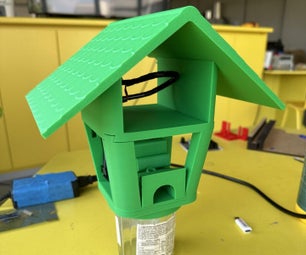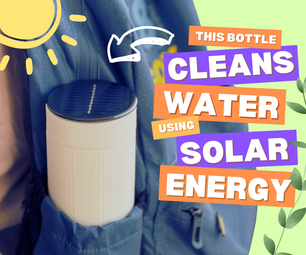Introduction: 10 Minute Variable Capacitor
Supplies you will need:
1.) Sharpie
2.) Superglue
3.) CD case (slim)
4.) 2 CD's
5.) Wire (26 AWG)
6.) Heavy Paper
7.) Glue Stick
8.) Tinfoil sheet
9.) Pocket or Exacto knife
10.) Plastic bottle cap
Step 1: PREPAIR "PLATES"
a.) Turn both CD's upside down and cover them half-way with glue from the glue stick
b.) Place CD's glue side down on tinfoil so only the glue covered part of the CD is on the tinfoil
c.) Wait for Glue to dry and then trim excess foil of with the knife
d.) Cut desired length of wire off and remove insulator about 1/4 inch
e.) pass wire thru center opening from non-tinfoil side to tinfoil side and tape exposed portion to foil
e.) Set aside for now
b.) Place CD's glue side down on tinfoil so only the glue covered part of the CD is on the tinfoil
c.) Wait for Glue to dry and then trim excess foil of with the knife
d.) Cut desired length of wire off and remove insulator about 1/4 inch
e.) pass wire thru center opening from non-tinfoil side to tinfoil side and tape exposed portion to foil
e.) Set aside for now
Step 2: Prepair the Holder
a.) Place 1 CD in the jewel case and close lid
b.) Center the Bottle cap on the lid open side up
c.) Use the sharpie to trace the outline of the bottle cap
d.) Remove the lid from the jewel case
e.) VERY CAREFULLY use the back of the knife tip to scrap the plastic away under the sharpie line until the center piece falls out
b.) Center the Bottle cap on the lid open side up
c.) Use the sharpie to trace the outline of the bottle cap
d.) Remove the lid from the jewel case
e.) VERY CAREFULLY use the back of the knife tip to scrap the plastic away under the sharpie line until the center piece falls out
Step 3: Finish Second Plate Assembly
a.) Use point of knife to open a small hole in the center of the top of the bottle lid
b.) add a ring of superglue to the top of the lid and attach to the second CD on the non-tinfoil side
c.) cut off piece of wire and strip the insulation off for 1/4 inch and pass thru hole in lide
d.) Tape exposed portion of wire to tinfoil
b.) add a ring of superglue to the top of the lid and attach to the second CD on the non-tinfoil side
c.) cut off piece of wire and strip the insulation off for 1/4 inch and pass thru hole in lide
d.) Tape exposed portion of wire to tinfoil
Step 4: Assembly
a.) install first plate tinfoil side up in the CD holder with wire hanging out one side
b.) Use superglue to permanently attach the CD to the holder
c.) trim Sheet of paper to completely cover the CD and be easily installed into holder
d.) reattach the jewel case lid
e.) pass bottlecap of plate 2 thru the opening in the jewel case and close the lid.
f.) You should be able to easily spin the top CD now, but it should not spin on its own
g.) tape the lid closed (loose enough for cd to still spin)
b.) Use superglue to permanently attach the CD to the holder
c.) trim Sheet of paper to completely cover the CD and be easily installed into holder
d.) reattach the jewel case lid
e.) pass bottlecap of plate 2 thru the opening in the jewel case and close the lid.
f.) You should be able to easily spin the top CD now, but it should not spin on its own
g.) tape the lid closed (loose enough for cd to still spin)









